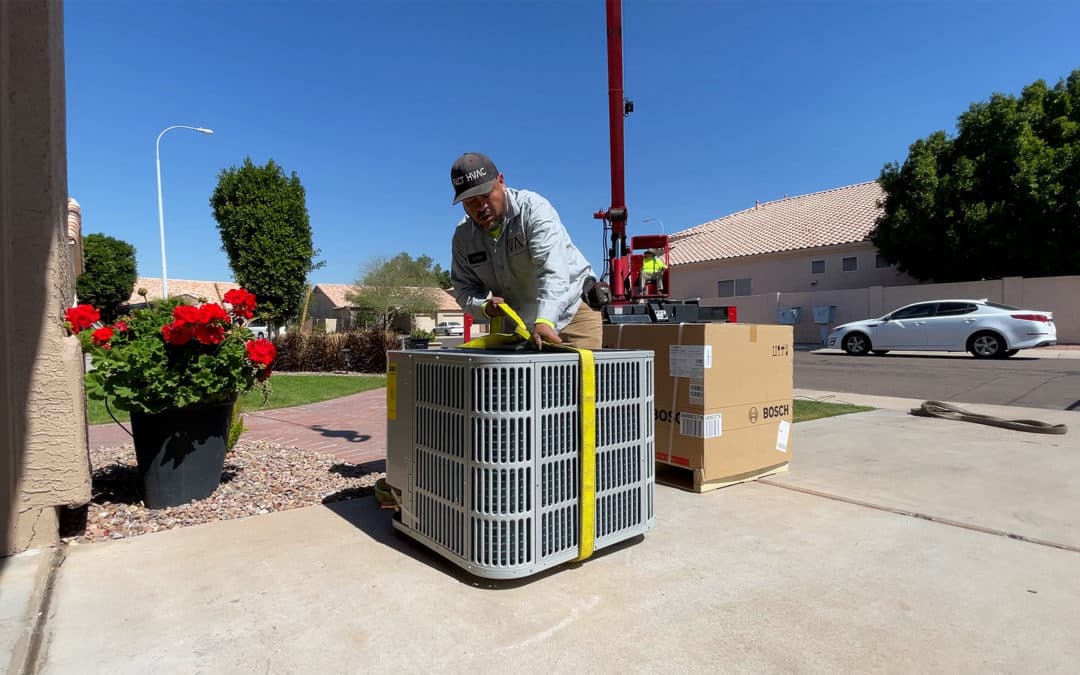Let’s delve into the pros and cons of A2L refrigerants, how they work, and their potential impact on pricing for new AC systems. In recent years, the air conditioning industry has been undergoing a significant transformation with the introduction of new refrigerants designed to address environmental concerns while maintaining efficient cooling capabilities. One of the promising developments in this arena is the emergence of A2L refrigerants, which offer a potential solution to reduce greenhouse gas emissions without compromising performance.
Before we get into it, need repair service? Looking to buy a new AC system? At FACT HVAC we make scheduling HVAC services in Tempe and consultations easy with our online scheduling! Simply click SCHEDULE NOW to get stared.
Understanding A2L Refrigerants
A2L refrigerants are a category of mildly flammable substances that fall between non-flammable (A1) and highly flammable (A3) categories based on their flammability rating. They are primarily composed of lower global warming potential (GWP) compounds compared to older refrigerants like R-410A, which is widely used but has a high GWP. Examples of A2L refrigerants include R-32 and R-454B, which have gained traction due to their environmental benefits.
How A2L Refrigerants Work
These refrigerants operate on similar principles as traditional refrigerants, utilizing a cycle of compression and expansion to transfer heat from indoors to outdoors. The key difference lies in their chemical composition, which allows for better efficiency and lower environmental impact. A2L refrigerants require modifications in AC system design to ensure safe usage, including improved leak detection and mitigation strategies.
Pros of A2L Refrigerants
- Environmental Benefits: A2L refrigerants have significantly lower GWPs compared to older refrigerants, contributing to reduced direct and indirect greenhouse gas emissions.
- Energy Efficiency: These refrigerants can potentially improve the energy efficiency of AC systems, leading to lower electricity consumption and operational costs.
- Regulatory Compliance: Many countries are moving towards phasing out high-GWP refrigerants, making A2L refrigerants a viable compliance option for manufacturers and consumers.
- Improved Performance: In some cases, A2L refrigerants have demonstrated better thermodynamic properties, enhancing overall cooling performance.
Cons of A2L Refrigerants
- Flammability Concerns: Despite being classified as mildly flammable (A2L), safety protocols and specialized equipment are necessary to mitigate risks during installation, maintenance, and disposal.
- System Compatibility: Existing AC systems may require retrofitting or complete replacement to accommodate A2L refrigerants, potentially increasing upfront costs.
- Price Volatility: As with any new technology, the initial adoption phase may lead to fluctuations in pricing until economies of scale and widespread adoption stabilize the market.
- Training and Certification: HVAC technicians and installers need specialized training and certification to handle A2L refrigerants safely, adding to operational complexities.
Impact on Pricing for New AC Systems
The transition to A2L refrigerants is expected to influence the pricing of new AC systems in several ways:
- Initial Costs: Manufacturers may incur higher costs initially due to research and development of compatible equipment and safety measures.
- Installation Costs: Consumers might face higher installation costs due to the need for specialized equipment, safety measures, and technician training.
- Long-term Savings: Despite potentially higher upfront costs, consumers can benefit from reduced energy bills and compliance with evolving environmental regulations, offsetting initial investments over time.
Conclusion
A2L refrigerants represent a promising advancement in the air conditioning industry, offering a balance between environmental sustainability and efficient cooling performance. While their adoption may come with challenges such as flammability concerns and initial cost implications, the long-term benefits in terms of reduced environmental impact and operational efficiency are substantial. As manufacturers continue to innovate and regulators enforce stricter environmental standards, the transition to A2L refrigerants appears not only necessary but also beneficial for creating a more sustainable future.
In navigating this transition, consumers and industry stakeholders alike will need to stay informed about the latest developments, safety protocols, and regulatory requirements to ensure a smooth and successful integration of A2L refrigerants into the HVAC landscape in 2025.

